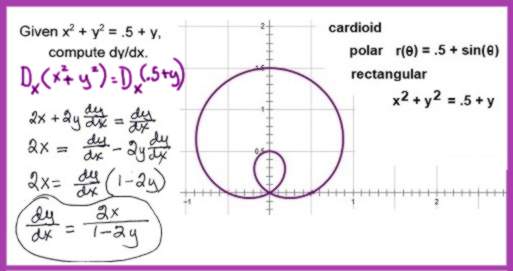|
Instructions As with other functions, one may "take" a derivative of each side of the equation but before that plan your attack.
- Consider which derivative symbol is cleanest, easiest?
d(left function)/dx = d(right function)/dx or
Dx(left function) = Dx(right function)
Consider which function and derivative symbols are cleanest, easiest?
f(x) & f'(x), y & y', y & dy/dx, or y & Dx(y).
A sample is provided below to help you make your decision.
- Determine which letters stand for variables and which represent functions.
The symbol dy/dx is read "the derivative of y with respect to x" so, y is a function and x is the independent variable.
- Say y is a function in x, y=f(x). Count the y's in the original equation.
- Each of the original y's requires a dy/dx once the derivative is taken.
- Isolate all the dy/dx on one side of the equation.
- Solve for the dy/dx as one usually solves an equation.
- When taking a second derivative, dy/dx may be part of the solution to the second derivative. If dy/dx is algebraicaly "clean and simple,"
use the "clean & simple" version in your solution rather than the dy/dx symbol found by taking the first derivative.
|



